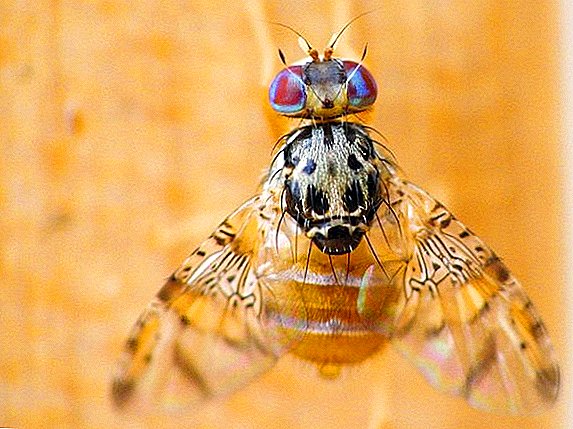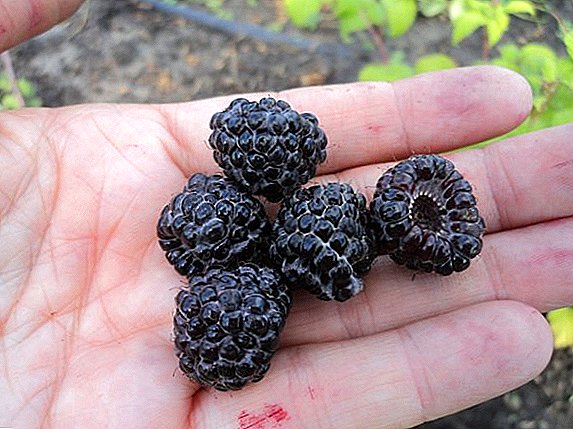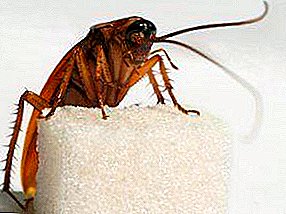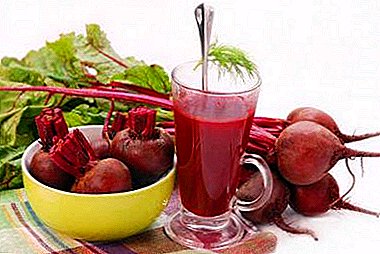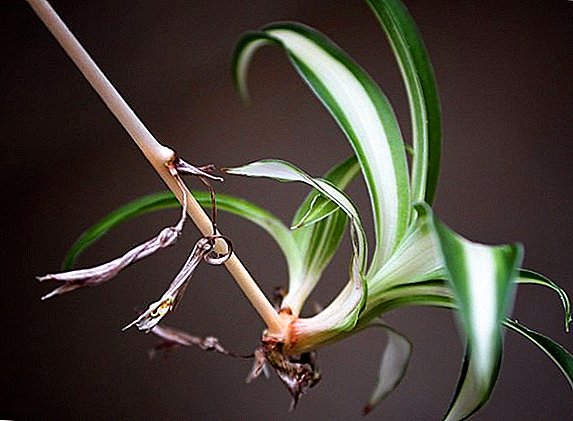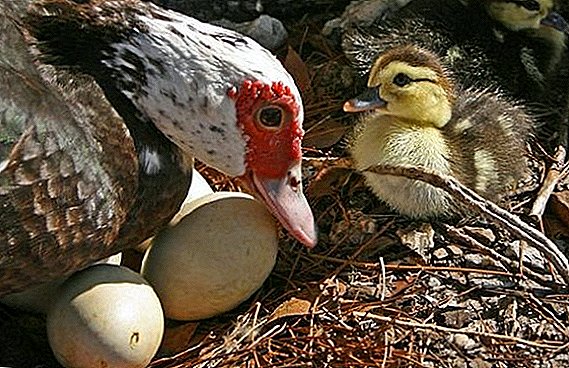 Rearing ducks for eggs and offspring has several subtleties. The fact is that not every hen will be a good hen, besides this, you need to know what conditions the birds need for a comfortable hatching. About these nuances and talk in our article.
Rearing ducks for eggs and offspring has several subtleties. The fact is that not every hen will be a good hen, besides this, you need to know what conditions the birds need for a comfortable hatching. About these nuances and talk in our article.
Choosing a good hen
Meat birds are not suitable for incubation; when breeding at meat crosses, the maternal instinct is suppressed.
The main qualities inherent in good hens are the lack of aggression in character, an unkempt, not prone to hysteria character.
Check out the most popular breeds of ducks for home breeding.
Indoot (spike), wild specimens, including mallards possess such qualities. They not only hatch eggs, but also do an excellent job with raising a brood. Shipunov, for example, are often used to incubate other people's clutches.  Among the usual domestic breeds, hens have the qualities of egg and meat-egg types: Indian runner, kayuga, Saxon, gray Ukrainian.
Among the usual domestic breeds, hens have the qualities of egg and meat-egg types: Indian runner, kayuga, Saxon, gray Ukrainian.
Did you know? Only females make quacks, and the most interesting thing is that this sound has no echo.To pick up a hen and make sure that she does not throw the clutch, you can conduct a test. In the prepared nest you need to put a few models of eggs and watch the behavior of the bird. After this, the dummies should be replaced with fertilized eggs, and if the duck continues to sit, it means that you have found your hen.
How many days are sitting on eggs
On average, the clutch is hatched from 26 to 36 days; in wild specimens, the period can last up to 40 days.
Find out what to do if the egg does not carry eggs.
Domestic duck
Domestic individuals sit on the clutch for 26-28 days, peking, for example, incubates for 29 days. Here it is necessary to take into account that the breed has a weak maternal instinct, therefore its eggs are more often laid under other hens. 
Musky (indooot, mute swan)
Shipuns are good and responsible mothers who, leaving the nest to drink or eat, cover the clutch with their own fluff. These birds are often used to incubate chicken or goose eggs. They sit longer than normal home, from 30 to 36 days. 
Did you know? Ducks helped oceanographers explore oceanic and marine currents and their directions, though not living specimens, but plastic toys. In the early 90s of the last century, containers with toys were swept away from the deck of a merchant ship. For many years after the event in different parts of the world they found plastic ducklings, who were washed ashore.
How to arrange and where to place the nest
Basic recommendations for nest placement:
- a place isolated from access by other animals and birds;
- protection from drafts, heating in the cold season;
- location away from feeders and passages;
- lack of bright light;
- material for the nest without odors;
- the presence of a soft litter, with a recess in the center of the nest, so that the eggs do not roll out;
- the edges of the socket should not have protruding sharp corners or chips, wire;
- litter can be warmed with collected duck down;
- the edges of the nest should have a small threshold.
Important! Remember that during this period, females are extremely anxious and irritable. Approaching the nest, it is advisable to warn the bird from afar with a voice so that the visit does not become an annoying factor for it.
How to select eggs
To lay eggs of birds of other breeds, they are stored under certain conditions after collection:
- position - horizontal in a basket or cardboard box;
- in the presence of corrugated gaskets stored vertically with a blunt end up;
- temperature - + 9-14 ° C;
- humidity - 75%.

We advise you to learn how to raise ducklings in an incubator.
When selecting pay attention to the form, the state of the shell. Deformed, cracked, heavily contaminated (embryo infection is possible through the pores in the shell), the material is rejected.
In no case should eggs be washed: this will damage the layer of protective film that maintains the necessary moisture inside. At the age of 10 days, an ovoscope is tested, unfertilized material is removed.
Important! In the case of laying eggs of others, their age should not exceed 5 days, otherwise the offspring will not leave them.
How many eggs can you put under the duck
The size of the clutch depends on the size of the female, since all eggs should be covered with her body evenly. Large ducks can cover up to 20 of them, small individuals up to 15. They also consider the “experience” of the hen: more experienced ones are trusted by a larger number. Many farmers are oriented to the season: in the cold season, the laying should be slightly less than in the warm period. Muskaty breed enclose to 18 pieces, to other breeds - from 13 to 20 pieces. 
How to care for a hen during a brooding period
As mentioned above, the female needs solitude and silence, it is undesirable to admit to her drakes or other females. Even between several hens, it is desirable to install partitions. The room temperature during this period should not fall below +8 ° C.
Learn more about the breeding of such breeds of ducks: Musk, Bashkir, Blue Favorite, Mulard.
Walking the female should last at least half an hour, so that she can swim, pinch the greens. Bathing and the purity of the duck's feathers are important for her well-being. Water is of particular importance for musky rocks, so next to the nest (in the cold season) it is imperative to install a bathing container so that the bird can wet the feathers and moisten the clutch. The fact is that the film on the shell is too dense, and from time to time it is necessary to violate its integrity by irrigation in order for the embryo to receive enough oxygen.  Feed the hen dry mixes with a predominance of grain, but do not overfeed. The female usually eats as much as she needs to maintain strength. In the early days, the hen may not get up from the nest at all and not eat.
Feed the hen dry mixes with a predominance of grain, but do not overfeed. The female usually eats as much as she needs to maintain strength. In the early days, the hen may not get up from the nest at all and not eat.
Read more about the composition of the winter and summer ration for ducks.
In conclusion, advice: if the hen incubates the eggs of different breeds, the ducklings can appear with a difference of several days. In this case, the first babies should be picked up and taken care of outside the nest until the whole brood appears. If this is not done, the female can be distracted by their upbringing and leave the clutch.


